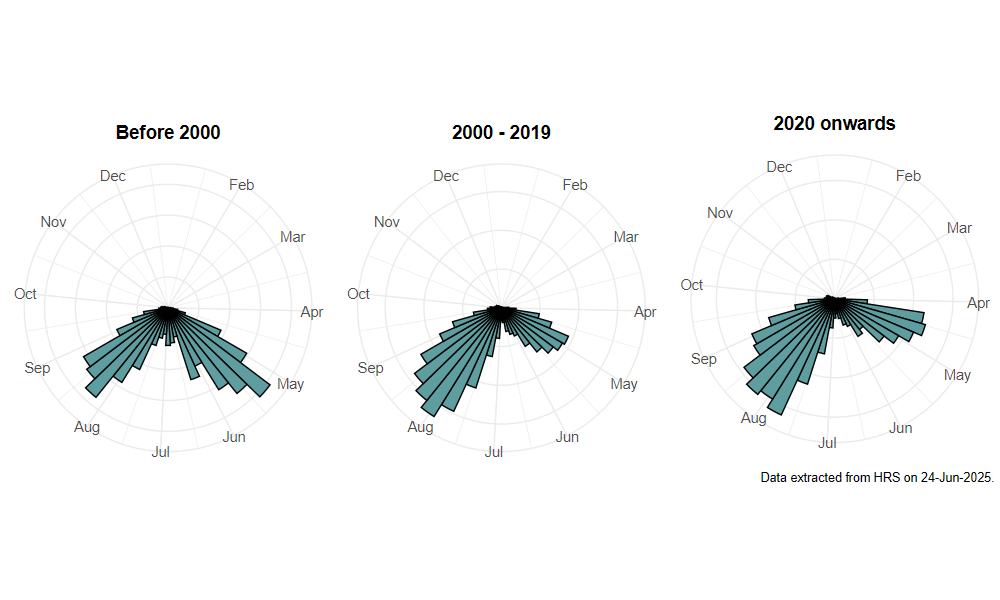Dasysyrphus albostriatus (Fallén, 1817)
Identification
Identification difficulty = 2. ![]()
![]() according to Ball & Morris, 20241
according to Ball & Morris, 20241
Synonymy
Syrphus albostriatus Fallén in Coe(1953)2.
Biology
The larva is aphidophagous and arboreal, occurring on both conifers and broadleaved trees. They feed nocturnally, resting near the aphid colony by day on twigs and branches, where they are superbly camouflaged by their dark colours and body projections. Adults are usually found near trees in situations such as woodland rides and edges, hedgerows and gardens where they can be found visiting flowers, such as white umbels and yellow composites, or settled on sun-lit vegetation.
Flight period
The following plots show the number of unique records per week excluding those reported to be of immature stages.

Distribution
Extremely widely distributed, mainly occurring in wooded districts. In more northerly areas it is clearly more abundant in lowland and coastal environments. Records extend north as far as Sutherland.

Trends
The following plots show the Frescalo TFactor vs year and a map of the rescaled frequency (all records) for the species.